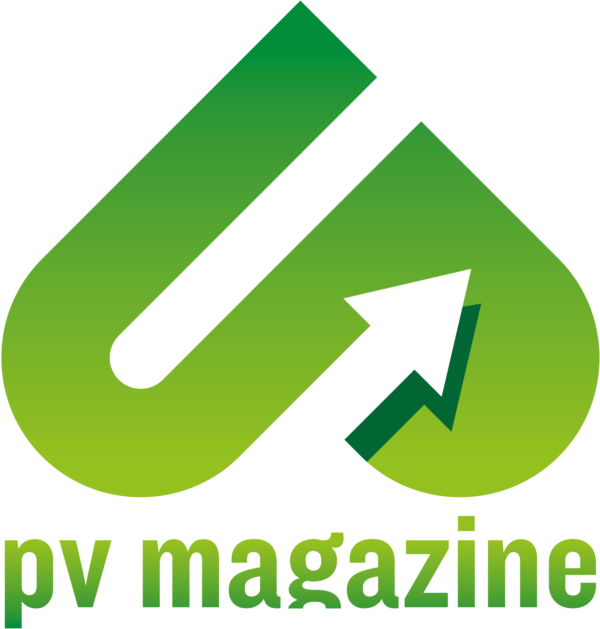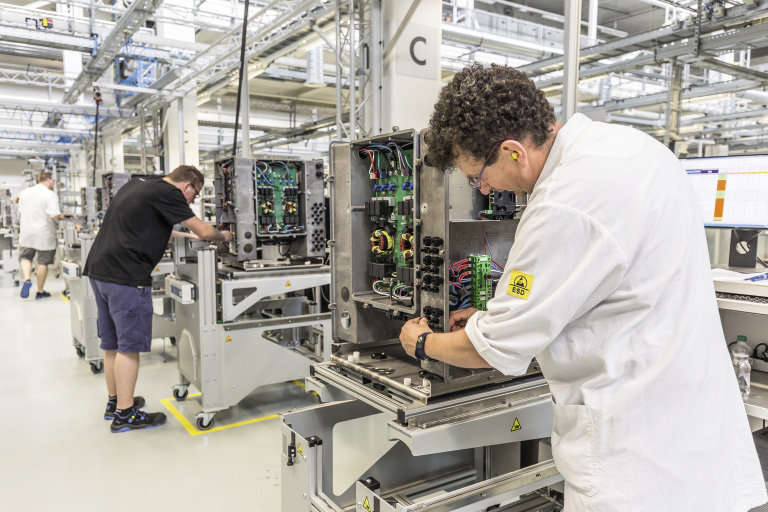 A large portion of design for recycling concerns product assembly. Gluing parts together can mean that they cannot be separated cost efficiently, or ever again at all. Push-fit connections are the preferred method to join components together.
A large portion of design for recycling concerns product assembly. Gluing parts together can mean that they cannot be separated cost efficiently, or ever again at all. Push-fit connections are the preferred method to join components together.
Much like solar photovoltaics itself, the concept of a circular economy dates back a few decades. While solar PV has made a number of more significant steps forward over the years, the implementation of the circular economy concept has been much slower. Still, progress is being made. In the solar industry, module and battery recycling have taken center stage, but inverters haven’t been talked about as much.
The same set of rules governs end-of-life treatment of solar inverters as for laptops, monitors, or home appliances – they are electronic waste. The rules that govern e-waste end-of-life processes, however, are different throughout the world. Even in the European Union, where policymakers put great efforts into aligning their approaches, member states have quite different policies in place. The European Union put the Waste Electrical and Electronic Equipment Directive in place, which was adopted by the member states and then shaped into national versions of the directive.
In other parts of the world, differences can be even more significant – and that is a big problem, because the burden and incentives to improve on recyclability and collection rates are alternately placed on solar PV manufacturers, distributors, and end customers.
Tight regulations
Germany-based inverter manufacturer SMA has formulated a circular economy strategy for its products. The circular economy approach focuses on longevity, repairability, and reusability and recycling of the inverters. A multi-layered endeavor requires companies to revise their own designs and manufacturing processes, engage with supply chains, and handle policy approaches around the world.
The Global E-waste Monitor, a collaboration between the International Telecommunication Union (ITU), the International Solid Waste Association (ISWA), and the Sustainable Cycles (SCYCLE) Programme – currently co-hosted by United Nations University (UNU) and the United Nations Institute for Training and Research (UNITAR) – provides an annual update on e-waste volumes in the world and the respective recycling rate.
In 2019, the world saw a record of 53.6 million tons of e-waste entering end-of-life stages, of which only 17.4% had been recycled. Right now, only 78 countries in the world, hosting 71% of the global population, have legislation in place that governs e-waste treatment. Europe is by far the region with the highest recycling rate of 42%, with Asia, Africa, the Americas, and Oceania all dipping below the 10% e-waste recycling rate. By 2030 the reports suggest there will be 74 million tons of e-waste, of which the ITU hopes 30% can be recycled. All these figures relate to e-waste in general and make no distinction between inverters and TVs. However, home appliances and inverters contain circuit boards, capacitors, coils, and magnetic parts and housings, which ought to be recycled.
SMA, like other manufacturers of electrical appliances in Germany, is registered with the Foundation Elektroaltgeräteregister (EAR) for e-waste. The manufacturer registers periodically how many tons of inverters it places on the German market. SMA then pays a levy for these volumes. The legislative body’s idea behind this is that the end-of-life treatment is already paid for, which in turn finances a well-functioning recycling infrastructure.
“That is the case in Germany, but even within Europe the differences are big,” explains Matthias Schaepers, global sustainability manager at SMA. “In some European countries it is not the manufacturer of the product that has to register the product, but the installer.”
The sustainability manager says that the system is generally effective. Reportedly, while working with international certification body NSF to develop an ecolabel standard for inverters, the German approach was praised. But he also notes that the policy can harm recyclability.
“The problem is that if a company wants to design its products in a way so they can be recycled and reused better, there simply is no incentive to do so. As the company has paid for the recycling already, it doesn’t make any difference, whether the inverter is designed for recyclability and reusability or not,” explains Schaepers.
Despite a lack of incentives, SMA has developed a comprehensive sustainability strategy. In this, the company set itself the goal of using 90% recyclable components in its products, by 2025. Since 2018, the company has started to establish its sustainability guideline, which is continuously expanded and developed. A circular economy approach that guides product design and manufacturing processes was, of course, also established.
Circular design
According to the SMA sustainability manager, this is more complicated than one might think. To determine that a portion of the inverter is recyclable must preclude a definition of recyclability. One can determine that certain materials are generally speaking recyclable. However, it is necessary to consider how these materials are processed in the components and then joined into an inverter. Even if all materials are principally recyclable, some manufacturing techniques will render them non-recyclable. For example, suppose there are hazardous substances anywhere in the inverter that are impossible to separate from the rest of the materials. In that case, this is a severe problem, and the inverter parts cannot be recycled.
“Let’s take the printed circuit board as an example. If we assume the materials which are used are 90% recyclable but the capacitors have been connected to the circuit board in a way that makes it really hard, or even impossible to detach, then this circuit board is no longer recyclable,” says Schaepers. “If we buy larger quantities of a product then the influence is bigger on the supplier, and if it is a standard product which one could find in almost any other electronic device then the influence SMA, or the solar industry can take is limited.”
He explains that there are several PCB suppliers, and they are aware that there is a market for recyclable PCBs. If their customers like SMA and those not from the solar industry request more sustainable products, it will speed up developments in the right direction.
Capacitors and PCBs are repeatedly mentioned as particularly hard-to-recycle components in electrical inverters. Capacitors contain large amounts of aluminum, gallium, and PCBs containing copper, palladium, gold, and silver. Some processes allow for the retrieval of the metals from PCBs. However, the fiberglass and resin, as well as acids that have been used for treatment, could end up in the environment if non-conforming companies do the recycling.
Other parts of the inverter, such as choke coils and other magnetic coils, are reasonably easy to recycle, as long as they are built into the inverter to allow the recycler to remove them with relative ease. “A press fit connection is always the most preferable type of connection,” according to the global sustainability manager. “If you screw things together the question always is whether the recycler bothers to undo it. And if you glue things together separation becomes nearly impossible.”
Such design specifications could become mandatory for other manufacturers, as well. The EU has been developing an eco-design guideline for PV plants since 2017, though Schaepers does not believe that there will be law from Brussels before 2022. In its current form, the eco-design does not consider the use of secondary raw materials in new products.
While SMA cannot ensure that the materials from its old inverters are used in manufacturing new ones, the company has committed to increasing its share of secondary materials in its new products by 25% by 2025. Since inverter manufacturers are dependent on their supply chains, it is quite complicated to prescribe full circularity; however, progress is being made.
The company is working with a recycler in Germany to trial a collection and treatment process. Some materials that are collected can be sent right back to the supplier of the component.
Currently, one focus is on the aluminum housing, Schaepers says. And since it means aligning processes of the collection and recycling company, and the aluminum processor, it’s not exactly a
piece of cake, either.
This content is protected by copyright and may not be reused. If you want to cooperate with us and would like to reuse some of our content, please contact: editors@pv-magazine.com.

